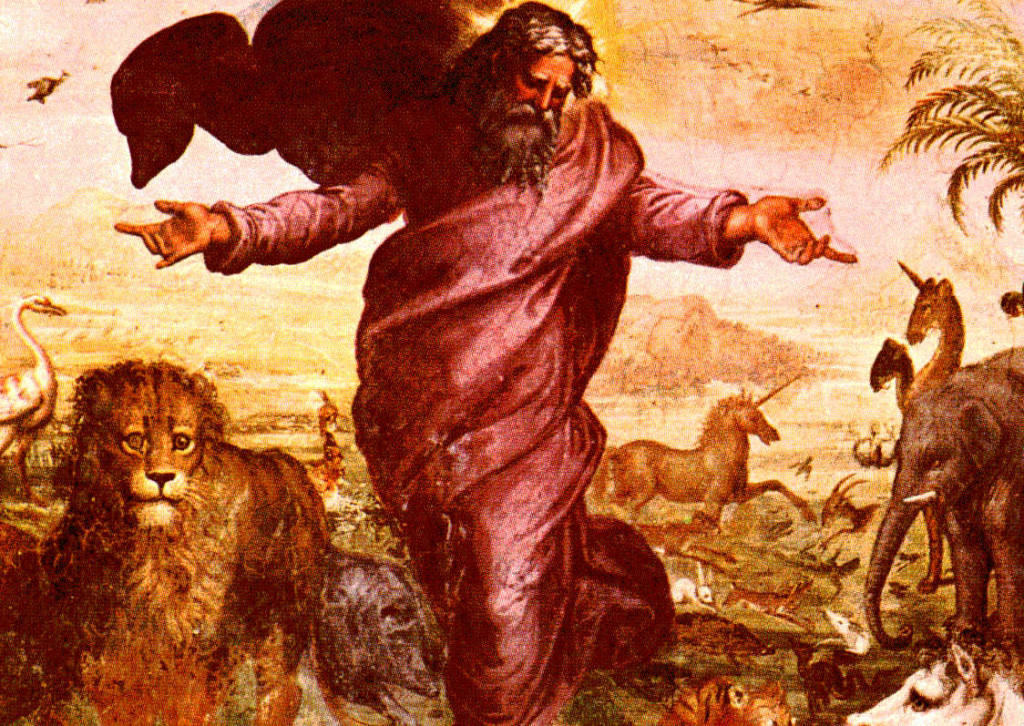


A demon hovers in the background, while other damned souls writhe around in the fiery landscape. Bouguereau was likely inspired by the following lines from the poem: "As I beheld two shadows pale and naked, / Who, biting, in the manner ran along/ That a boar does, when from the sty turned loose." In the foreground, the wrathful Capocchio - a friend from Dante's schooldays, who was burned at the stake as an alchemist - is attacked by Gianni Schicchi, another of Dante's contemporaries, who had impersonated a dead man in order to steal his inheritance. In this section, the poet Dante and his guide Virgil descend to the eighth circle of hell, where they encounter the tormented souls of "falsifiers" (counterfeiters and fraudsters).

The source material for this painting is Canto XXX from the "Inferno" sequence of the medieval poet Dante Alighieri's Divine Comedy (1308-20). A former pupil, the American painter Edmund Wuerpel (1866-1958), described Bouguereau as " lways gentle, always fair, never saying things he did not really mean it was a pleasure as well as a privilege to listen to him." In spite of his reputation as a force of reaction, Bouguereau was a venerated and - by all accounts - avuncular and encouraging teacher, whose most lasting cultural legacy was his consistent advocacy of the training of female art students at the Académie Julian.Despite the attention paid to Impressionism and other developments in experimental art during this period, these artists were in fact far more successful during that period itself, with Bouguereau celebrated for his technical mastery of the classical nude, amongst other things. Bouguereau, along with artists such as Alexandre Cabanel and Jean-Louis-Ernest Meissonier, was one of the figureheads of a late generation of Neoclassical painters active during the 1850s-90s.The Naturalist critic Louis de Fourcaud claimed that "in his observation of nature, is always the victim of his desire to improve on it." I do not see the way they see, or claim to see". The artist himself once stated that " s for the Impressionists, the Pointillists, etc., I cannot discuss them. He scorned them for their lack of technical precision, while they abhorred what they saw as Bouguereau's overly fussy, fastidious approach. Bouguereau has the odd distinction of being mainly renowned for his disagreements with other artists, namely the Impressionists, and other avant-garde groupings of the late-19 th century.In hindsight, we can see that this latter narrative is unfair: a brilliantly talented draughtsman capable of beautiful figurative paintings, Bouguereau's tastes were simply more traditional, his attitude to his career more acquisitive and pragmatic, than that of his avant-garde peers.

But in the decades following his death, when academic painting fell out of favor with art historians and critics, his reputation was significantly reduced, in some cases to that of an establishment huckster, tossing off lifelessly perfect nudes and pietàs for a credulous middle-brow audience. His religious and mythological tableaux, classical nudes, and Naturalist-influenced scenes of humble peasant life were produced at a prodigious rate, for an endlessly eager public (he once declared that "every minute of mine costs 100 Francs"). In his own era, the Neoclassical painter William-Adolphe Bouguereau was one of the most reputable and commercially successful artists in the Western world, showered with official acclaim and prizes, hugely popular with the art-buying bourgeoisie, and a respected and loved teacher. There are few artists of the modern period whose critical and commercial fortunes during and after their lifetime stand in such stark contrast.


 0 kommentar(er)
0 kommentar(er)
